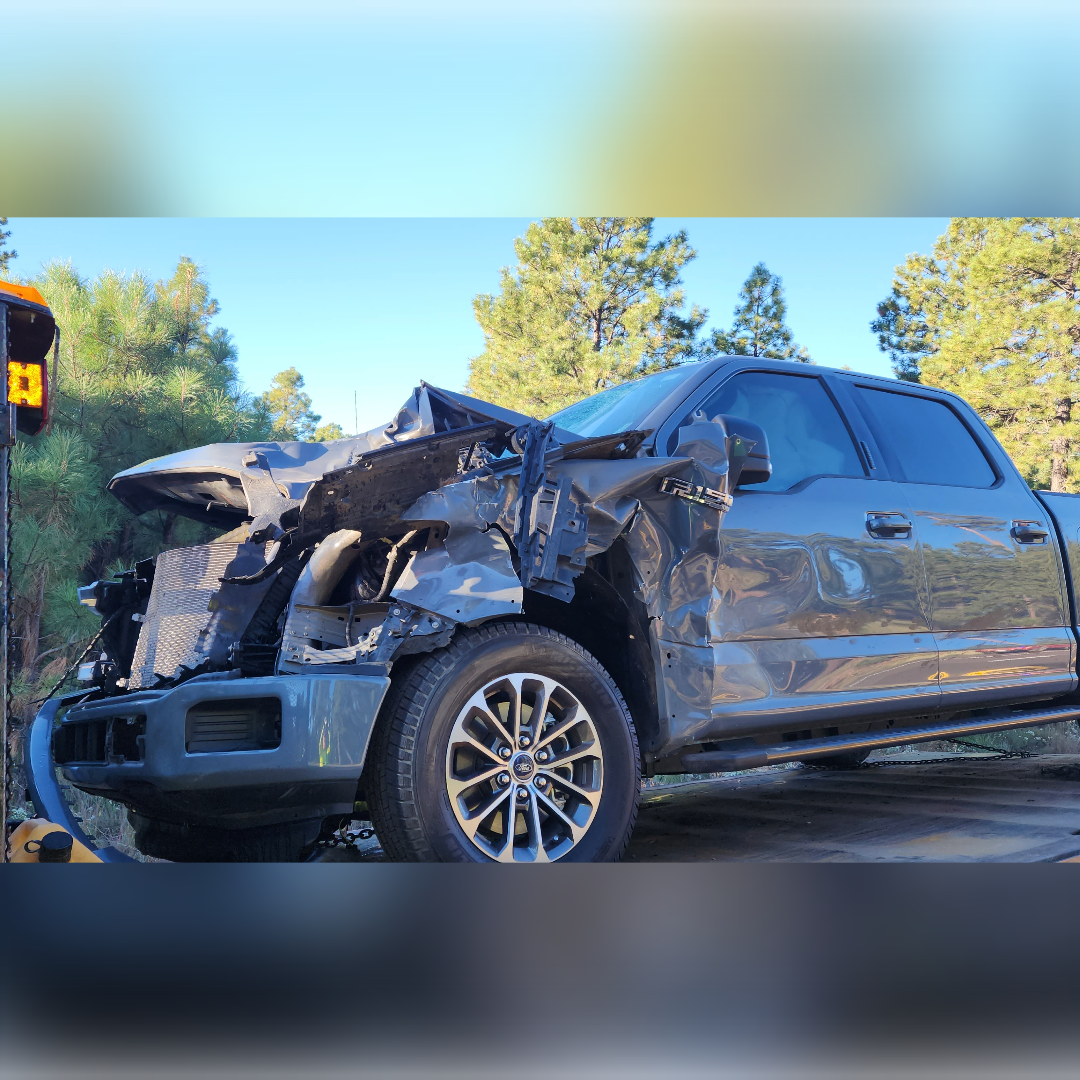Driving in rural areas? Pay attention for wildlife near highways
Driving in rural areas? Pay attention for wildlife near highways

Different seasons provide different reasons for wildlife to move from place to place. With warmer weather here, deer, elk and other wildlife are out and about looking for food, water and shade. And animals on the move means an increased risk of encountering wildlife on and near rural roads and highways.
The above photo shows a vehicle that struck an elk on a highway in Arizona’s high country.
As you travel on Arizona's rural highways and roads, the Arizona Department of Game and Fish offers these tips:
- Slow down. Driving more slowly increases reaction time and reduces the chance of a collision.
- Stay alert while driving, particularly at dusk and dawn.
- Scan ahead and watch for movement along roadsides.
- Obey traffic signs and watch for wildlife warning signs.
- Typically, you should not swerve to avoid hitting the animal. Stay in your lane and firmly brake.
- However, if it is a very large animal and there is no oncoming traffic and the shoulder is safe on either side of the road, it may be safer to swerve rather than risk the impact from a large animal, like a cow, horse or adult bull elk.
According to statewide crash data, in 2022, there were 1,830 vehicle collisions with animals in Arizona, resulting in four human fatalities and 280 injured persons. Consider that an average male elk weighs about 900 pounds and an average female elk weighs around 500 pounds. Animals of that size can cause severe damage to vehicles, resulting in injury or death to themselves as well as vehicle occupants.

